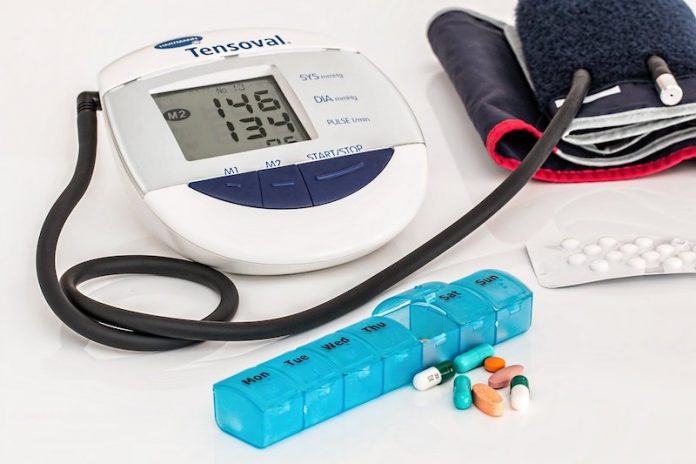
In a new study, researchers found that cells in the nasal passages and upper airways are likely the coronavirus’s major point of entry into the body.
The finding further supports the use of masks to prevent the viral spread and suggests that nasal sprays or rinses might be effective in blocking infection by the coronavirus.
The study also found that common blood pressure medications are unlikely to increase the risk of contracting COVID-19, countering concerns that hypertension drugs could make it easier for the coronavirus to enter human cells.
The research was conducted by a team at Stanford Medicine.
The coronavirus that causes COVID-19 enters human cells by binding to a protein on the cell surface called ACE2.
In the study, the team compared levels of ACE2 in the lungs, kidneys, testes, and intestines with ACE2 levels in cells lining the upper and lower airways.
They found high levels of ACE2 in airway cilia—tiny, flexible projections on the respiratory cell surfaces that sweep the airway clean of foreign particles like dust and invading pathogens.
Because most people breathe primarily through their nose, this is most likely the site of initial viral contact and infection.
The team suggests that face masks should be carefully worn to cover the nose, as the virus binds readily to cells in the nasal passage.
Because hypertension is a risk factor for severe COVID-19, the team also assessed the levels of ACE2 in sinus tissue samples obtained from hundreds of people with chronic sinusitis.
Some of these people were taking common blood pressure medications known as ACE inhibitors or angiotensin receptor blockers; others were not.
Past studies have found that the use of ACE inhibitors for hypertension increases the expression of ACE2 in the kidney and heart.
But the effect of these medications in the upper airways is more relevant when considering coronavirus infection.
However, the team found that ACE2 levels in the upper airways did not vary between those people taking blood pressure medications and those who were not.
This is the first mechanistic-based evidence that the use of ACE inhibitors and angiotension receptor blockers don’t increase levels of ACE2 in these upper airway cells.
The discovery of high levels of ACE2 protein in the airway cells might drive the development of new ways to prevent viral infection at the source.
Currently, major efforts are devoted to medications that work systemically through either intravenous or oral delivery.
The team says if the virus enters the body through the nasal lining, it also makes sense to explore nasally administered drugs and sprays to prevent infection.
One author of the study is Ivan Lee, MD, Ph.D., an instructor of allergy and immunology.
The study is published in Nature Communications.
Copyright © 2021 Knowridge Science Report. All rights reserved.



